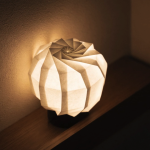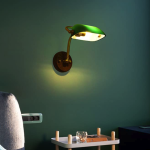The Art of Lustre
When it comes to lustre, few things on this planet can match the natural beauty of pearls. These mesmerising gems have been popular symbols of status, wealth, and power for thousands of years. But what exactly does the term “lustre” mean, and how does it affect the way we perceive pearls and other similar materials?
At its core, lustre refers to the light-reflecting properties of a given surface. When light strikes an object, it is either absorbed or reflected. The angle and intensity of the reflection determine how bright and luminous the surface appears. In the case of pearls, the play of light and shadow across the surface creates a delicate iridescence, also known as the “orient”.
The Science of Lustre
Pearls get their brilliant lustre from a combination of two factors: the nacreous layers that form around an irritant inside an oyster or mollusc, and the way light refracts and reflects through those layers. The nacre itself is made up of tiny, overlapping crystals of aragonite, a form of calcium carbonate. When light enters the outermost layer of nacre, it bends and splits into different wavelengths, depending on the angle and thickness of the layer. This creates a rainbow-like effect that gives pearls their distinctive lustre.
However, not all pearls are created equal. Some have a higher lustre than others due to a number of factors, including the thickness and smoothness of the nacre, the shape and size of the pearl, and the quality and quantity of the light source reflecting off its surface. Additionally, pearls that have been exposed to high temperatures, chemicals, or other environmental factors may lose their lustre over time.
The Appeal of Lustre
Despite the many advances in synthetic materials and lab-grown gems, natural pearls with their unmatched lustre remain highly prized and sought-after by collectors and jewellery enthusiasts. The allure of lustre lies not only in its aesthetic qualities but also in its ability to enhance the beauty of the wearer. A pearl necklace, for example, can brighten the complexion and draw attention to the face, while a pair of pearl earrings can soften sharp angles and accentuate the eyes.
Beyond pearls, other types of jewellery and precious metals also possess their own unique lustre. Gold and silver, for example, have long been cherished for their warm tones and metallic sheen, while diamonds and other gems owe their brilliance to their ability to refract and reflect light in mesmerising ways.
The Future of Lustre
As we move further into the 21st century, the world of lustre is likely to undergo significant changes. Advances in technology and materials science may allow us to create new, synthetic materials with even more dazzling lustre than ever before. Meanwhile, environmental concerns and sustainability issues may push us to explore alternative sources of pearls and other precious gems.
Despite these changes, one thing is certain: the allure of lustre will continue to captivate our imaginations and inspire us to seek out the most brilliant and beautiful gems the world has to offer.
In Conclusion:
Lustre is a fascinating and complex phenomenon that has captivated humanity for thousands of years. From the dazzling iridescence of pearls to the brilliant sparkle of diamonds and gold, the world of lustre is one of endless beauty and wonder. Whether we are exploring the science behind this phenomenon or admiring the aesthetic qualities of a beautifully crafted necklace or pair of earrings, the world of lustre will always be a source of fascination and inspiration for generations to come.






